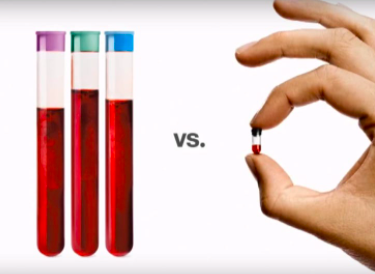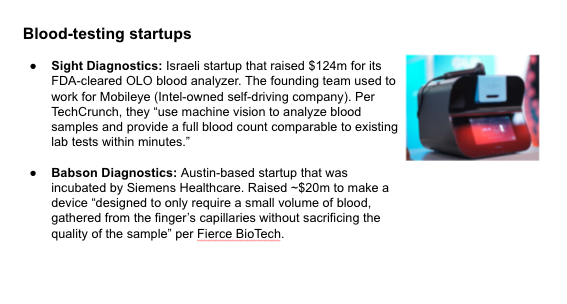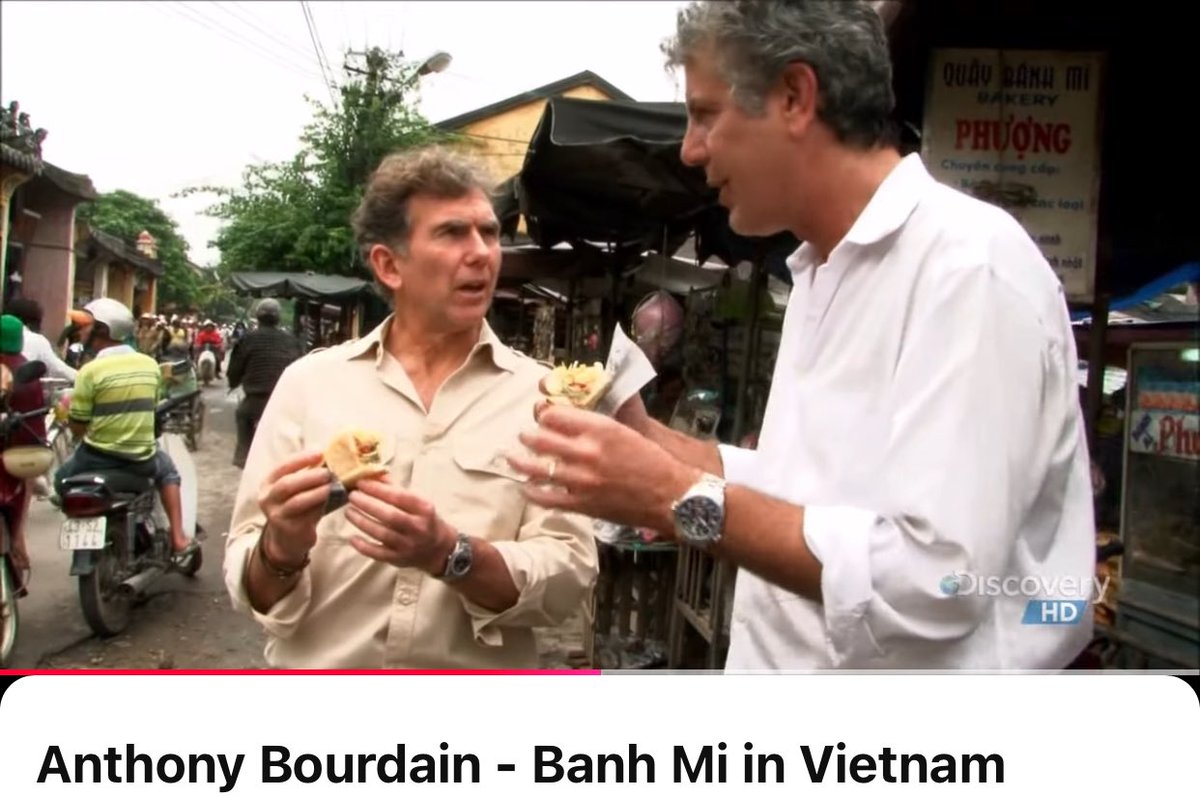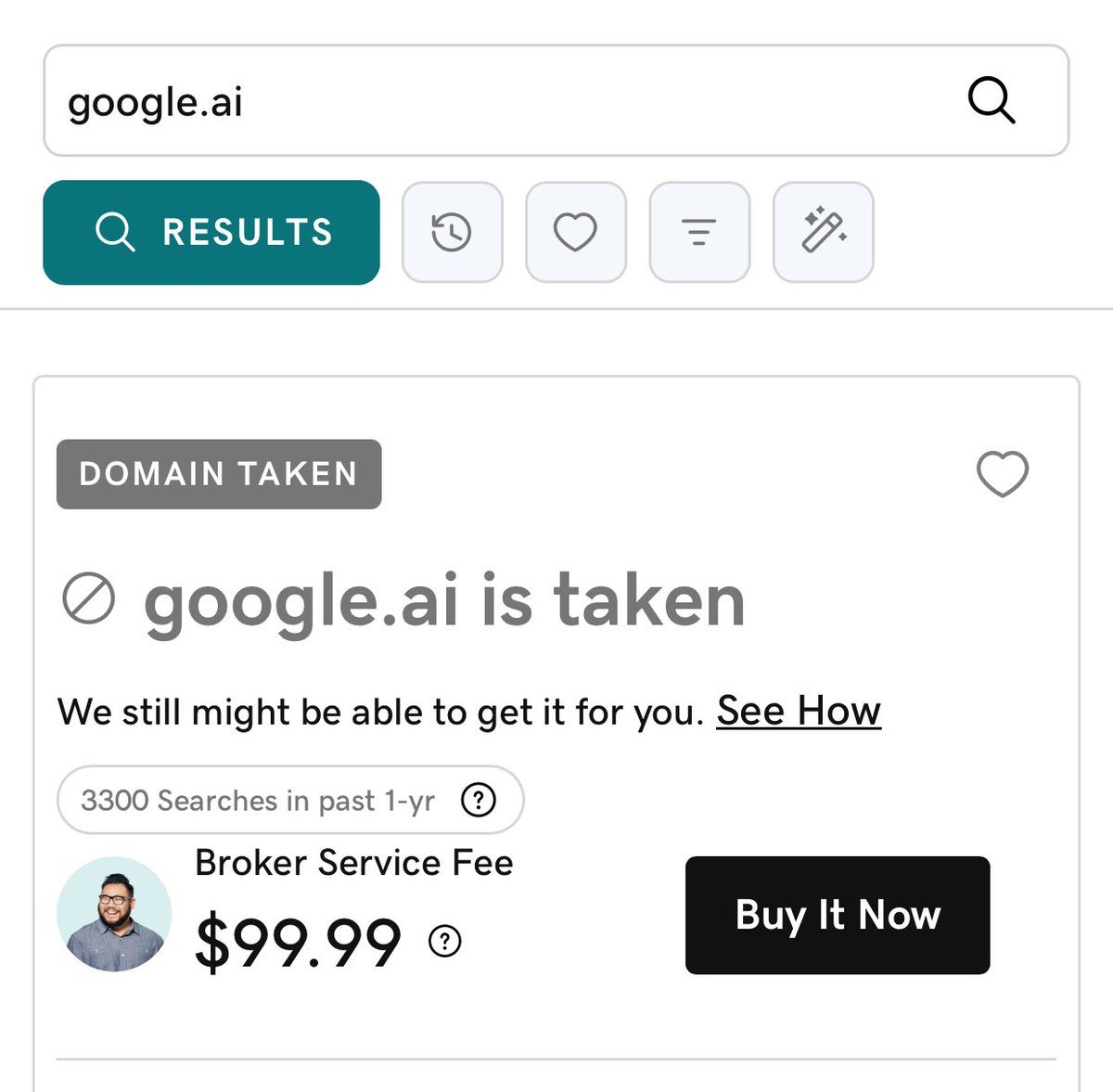As you know, Elizabeth Holmes is on trial for defrauding investors and patients.
Her blood-testing startup Theranos raised $700m+ and reached a $10B valuation before imploding.
Why exactly did Theranos technology (nanotainer, Edison, miniLab) fail, though?
Here's a breakdown🧵
Her blood-testing startup Theranos raised $700m+ and reached a $10B valuation before imploding.
Why exactly did Theranos technology (nanotainer, Edison, miniLab) fail, though?
Here's a breakdown🧵

1/ Elizabeth Holmes dropped out of Stanford at 19 and founded Theranos in 2003.
One of Theranos' founding myths is that Holmes had a "traumatic fear" of needles and blood.
Her idea: create a system that could run all medical tests on a single drop of blood (via a finger prick).
One of Theranos' founding myths is that Holmes had a "traumatic fear" of needles and blood.
Her idea: create a system that could run all medical tests on a single drop of blood (via a finger prick).
2/ You're def familiar with the more common blood test method she tried to disrupt.
Known as venipuncture, a phlebotomist draws "whole blood" -- aka blood with none of the components (plasma, platelets) removed -- from a vein.
Then, these samples are sent to a lab for testing.

Known as venipuncture, a phlebotomist draws "whole blood" -- aka blood with none of the components (plasma, platelets) removed -- from a vein.
Then, these samples are sent to a lab for testing.


3/ Not all blood tests are the same.
Some need whole blood:
◻️ Complete blood count: measures parts of your blood (red/white cells, hemoglobin)
Other tests separate serum/plasma from the blood (via centrifuge):
◻️ Biochemical tests (measure proteins, sugar) to diagnose diseases
Some need whole blood:
◻️ Complete blood count: measures parts of your blood (red/white cells, hemoglobin)
Other tests separate serum/plasma from the blood (via centrifuge):
◻️ Biochemical tests (measure proteins, sugar) to diagnose diseases
4/ Different blood tests also require:
◻️ Certain light spectrums (and sensors)
◻️ Right temperature
◻️ Reagents to facilitate a chemical reaction
An industrial analyzer (like the Siemens one below) can run 100s of samples an hour and do different types of tests.
◻️ Certain light spectrums (and sensors)
◻️ Right temperature
◻️ Reagents to facilitate a chemical reaction
An industrial analyzer (like the Siemens one below) can run 100s of samples an hour and do different types of tests.
5/ Drawbacks from traditional testing:
◻️ Needle is painful, draws too much blood and requires a pro (less people get tested b/c they are scared or don't have access)
◻️ Samples go to a lab (= time lag for results)
Holmes set out to make it easier, quicker and more accessible.

◻️ Needle is painful, draws too much blood and requires a pro (less people get tested b/c they are scared or don't have access)
◻️ Samples go to a lab (= time lag for results)
Holmes set out to make it easier, quicker and more accessible.


6/ In technical terms, Theranos offered immunoassays (a biochemical test looking for antibodies/antigens in blood).
There were 200+ options on the test menu (HIV screens, diabetic tests etc).
Theranos' Edison tabletop lab (below) could "run" the tests on a single nanotainer.
There were 200+ options on the test menu (HIV screens, diabetic tests etc).
Theranos' Edison tabletop lab (below) could "run" the tests on a single nanotainer.
7/ In 2013, Theranos partnered w/ Walgreens to offer 200+ tests in Arizona.
Finger pricks have problems, though:
◻️Puncturing skin more easily contaminates a sample (vs. drawing from vein)
◻️Low blood volumes were diluted to run more tests (this is considered "poor practice")
Finger pricks have problems, though:
◻️Puncturing skin more easily contaminates a sample (vs. drawing from vein)
◻️Low blood volumes were diluted to run more tests (this is considered "poor practice")
8/ Remember the blood-testing variables (whole blood, centrifuge, light, temp, reagents)?
Holmes said these could all fit into a microwave-size form factor (eventually renamed: miniLab) AND run 200+ tests on a nanotainer.
She was trying to bend the laws of physics and biology.
Holmes said these could all fit into a microwave-size form factor (eventually renamed: miniLab) AND run 200+ tests on a nanotainer.
She was trying to bend the laws of physics and biology.

9/ The idea of a miniature blood-testing machine is not new.
For decades, Abbot has sold a point-of-care blood analyzer (I-Stat) that produces rapid results.
It can run dozens of tests, but each one requires a different reagent, and those are loaded onto separate cartridges.

For decades, Abbot has sold a point-of-care blood analyzer (I-Stat) that produces rapid results.
It can run dozens of tests, but each one requires a different reagent, and those are loaded onto separate cartridges.


10/ Further, Theranos lab practices were awful:
◻️Lack of proper equipment (coat, goggles)
◻️ Work benches not cleaned
◻️ Undertrained staff
◻️ Wrong testing procedures
◻️Facilities didn't have filtration/air lock systems
Regulators would revoke multiple Theranos lab licenses.
◻️Lack of proper equipment (coat, goggles)
◻️ Work benches not cleaned
◻️ Undertrained staff
◻️ Wrong testing procedures
◻️Facilities didn't have filtration/air lock systems
Regulators would revoke multiple Theranos lab licenses.

11/ At its peak, Theranos ran in 40 Walgreens: it sold 7m+ blood tests to 150k+ patients.
The Edison was only able to do 12 of the 200+ tests (it often malfunctioned). Theranos used a modified Siemens machine for the rest.
In the end, Theranos had to correct or void 1m+ tests.
The Edison was only able to do 12 of the 200+ tests (it often malfunctioned). Theranos used a modified Siemens machine for the rest.
In the end, Theranos had to correct or void 1m+ tests.

12/ For the 2015 Pepperdine commencement speech, Holmes said "We code-named our product the Edison, b/c we assumed we’d have to fail 10,000x to get it to work the 10,001st time."
This iterative approach is quite fraught when it comes to people's health.
This iterative approach is quite fraught when it comes to people's health.

13/ In fact, the very first person Holmes went to with a startup idea -- Stanford medical professor Phyllis Gardner -- was suspicious of her approach.
An 18-year old Holmes pitched Gardner the Therapatch, an antibiotic-releasing patch:
An 18-year old Holmes pitched Gardner the Therapatch, an antibiotic-releasing patch:

14/ Ultimately, the Theranos "technology" failed to attract top-tier health investors.
And, its board was crammed with big name statesmen from the Cold War (George Shultz, Henry Kissinger), instead of health experts.
At least the miniLab was an improvement over early prototype.
And, its board was crammed with big name statesmen from the Cold War (George Shultz, Henry Kissinger), instead of health experts.
At least the miniLab was an improvement over early prototype.

15/ Holmes lied to investors, health partners, regulators and employees (many whistleblowers were legally harassed) about Theranos' testing capabilities.
However, the clearest victims are the patients that received false test results:
However, the clearest victims are the patients that received false test results:

16/ Holmes won't even defend her tech in the trial.
She will use the "Svengali defense", arguing her fraudulent actions were guided by ex-BF and former Theranos COO Sunny Balwani.
Opening statements for the trial start on Wednesday. We'll soon find out if her strategy works.
She will use the "Svengali defense", arguing her fraudulent actions were guided by ex-BF and former Theranos COO Sunny Balwani.
Opening statements for the trial start on Wednesday. We'll soon find out if her strategy works.

17/ If you enjoyed that, I write threads like this one business and tech 1-2x a week.
Follow @TrungTPhan to see them in your feed.
Here's one on a machine that is *slightly* more effective than the miniLab:
Follow @TrungTPhan to see them in your feed.
Here's one on a machine that is *slightly* more effective than the miniLab:
https://twitter.com/trungtphan/status/1429464889307762688?lang=en
18/ Sources
Google Doc of vids and articles: docs.google.com/document/d/12j…
The #1 go-to is of course @JohnCarreyrou who exposed Theranos with WSJ, then wrote the book "Bad Blood".
His new podcast tracking the Holmes trial is a must-listen:
open.spotify.com/episode/3FITMg…
Google Doc of vids and articles: docs.google.com/document/d/12j…
The #1 go-to is of course @JohnCarreyrou who exposed Theranos with WSJ, then wrote the book "Bad Blood".
His new podcast tracking the Holmes trial is a must-listen:
open.spotify.com/episode/3FITMg…
19/ SIDE NOTE: I discuss interesting topics like this once a week (with a healthy dose of dumb jokes) on the Not Investment Advice (NIA) podcast.
🔗linktr.ee/notinvestmenta…
🔗linktr.ee/notinvestmenta…

20/ Here's a salient example of Holme's absurd vision: During the Ebola Crisis (2014-2016), Theranos touted the "all-in-one" miniLab as a rapid-test solution for the outbreak.
It was a total flop:
It was a total flop:

21/ Theranos cast a huge shadow in blood-testing innovation, but these startups are making progress: 

22/ An interesting explainer on Holmes' deep voice
https://twitter.com/TrungTPhan/status/1432931727639412736?s=20
23/ Lord give me the confidence of Elizabeth Holmes that time she went on CNBC and defended herself by quoting Gandhi:
• • •
Missing some Tweet in this thread? You can try to
force a refresh


















